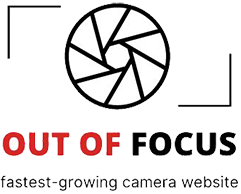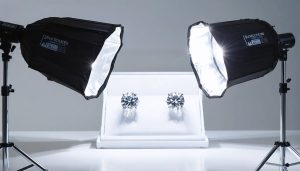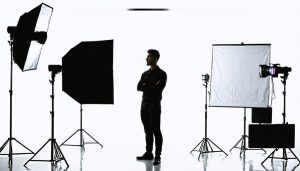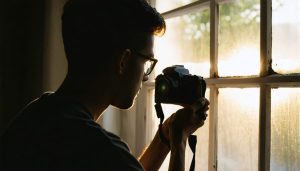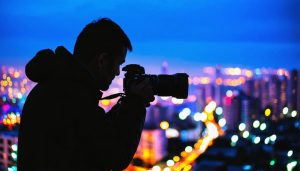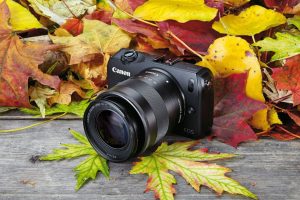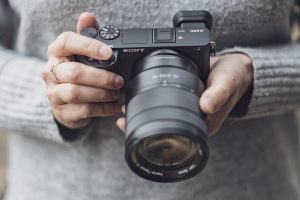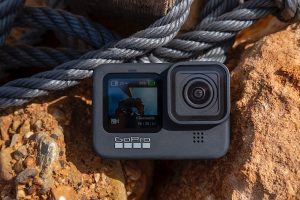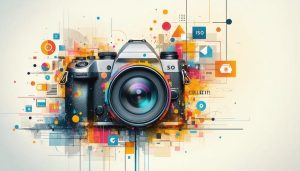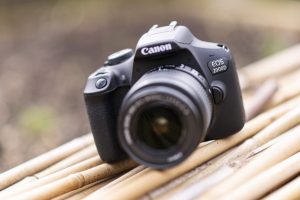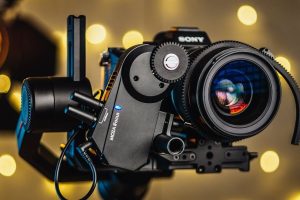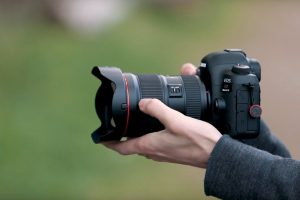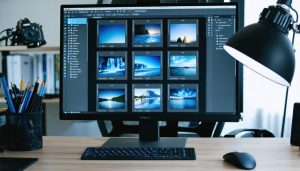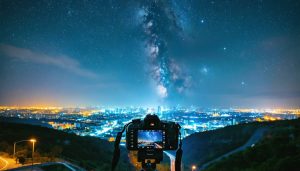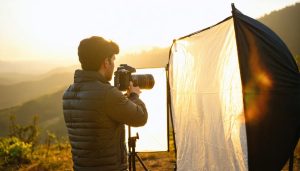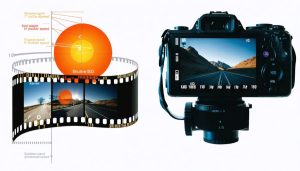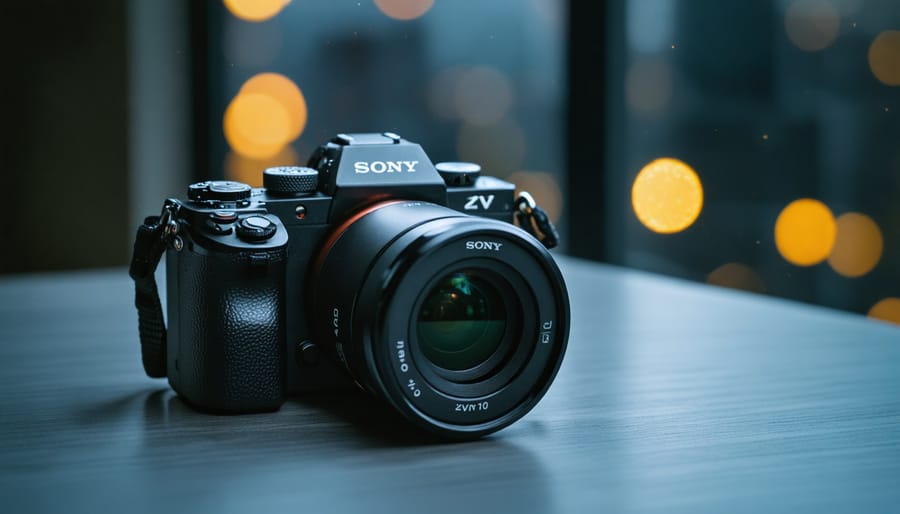
Master the Sony ZV-E10’s low-light capabilities by pushing ISO performance to 12,800 while maintaining clean images through precise noise reduction settings. Maximize the camera’s dual-gain sensor architecture at ISO 640 to capture stunning low light photos with minimal noise. Pair fast prime lenses like the Sigma 16mm f/1.4 or Sony 35mm f/1.8 with the ZV-E10’s impressive autofocus system for sharp, well-exposed night shots. Enable steady shot with active mode for handheld shooting down to 1/15th second, dramatically expanding your low-light shooting possibilities without compromising image quality.
This compact mirrorless camera delivers exceptional low-light performance that rivals more expensive bodies, thanks to its modern APS-C sensor and advanced processing engine. Whether you’re capturing nighttime vlogs or atmospheric evening portraits, the ZV-E10’s low-light capabilities open up creative possibilities previously reserved for full-frame systems.
The ZV-E10’s Low Light Capabilities Explained
Sensor Technology and ISO Range
The Sony ZV-E10’s APS-C sensor is a powerhouse for low-light photography, featuring a 24.2MP resolution that strikes an excellent balance between detail capture and light sensitivity. The sensor’s physical size, approximately 1.5 times smaller than full-frame, still provides ample surface area for light collection while maintaining a compact camera body.
In terms of ISO performance, the ZV-E10 offers a native range of ISO 100-32000, which can be expanded to ISO 50-51200. The camera performs exceptionally well in low light, delivering clean images up to ISO 6400, with minimal noise that’s easily manageable in post-processing. Between ISO 6400 and 12800, noise becomes more noticeable but remains well-controlled, especially when shooting RAW.
What makes the ZV-E10’s sensor particularly impressive is its dual gain architecture, which helps maintain image quality even as ISO values increase. This technology effectively provides two different sensitivity levels, optimizing the signal-to-noise ratio depending on the lighting conditions.
The sensor’s advanced design also incorporates copper wiring layers that improve light collection efficiency and reduce noise. This feature, combined with Sony’s latest image processing algorithms, helps preserve detail and color accuracy even in challenging low-light situations, making the ZV-E10 a reliable performer for everything from twilight street photography to dimly lit indoor events.
Real-World Noise Performance
In real-world testing, the ZV-E10 demonstrates impressive low-light capabilities that extend well beyond laboratory measurements. During evening street photography sessions, the camera maintains clean images up to ISO 6400, with only minimal noise becoming apparent in shadow areas. The color accuracy remains remarkably consistent even as light levels drop, particularly important for vloggers capturing twilight cityscapes or indoor events.
Testing in dimly lit restaurants revealed that the camera produces usable footage up to ISO 12800, though some grain becomes noticeable in darker areas. The noise pattern remains organic and film-like rather than digital and distracting, which can actually add character to certain scenes. During concert photography, where lighting conditions fluctuate dramatically, the ZV-E10’s dynamic range helped preserve both highlight and shadow detail effectively.
Indoor wedding receptions proved to be an excellent test case, with the camera handling mixed lighting conditions admirably. Even at ISO 3200-6400, skin tones remained natural and detailed. The noise reduction algorithms work particularly well with human subjects, maintaining a good balance between detail preservation and noise suppression.
One notable observation from night street photography sessions is that the camera performs best when shooting between ISO 1600-6400, offering an excellent sweet spot between noise control and detail retention. Beyond ISO 12800, while still usable, images show more pronounced noise that may require additional post-processing attention.
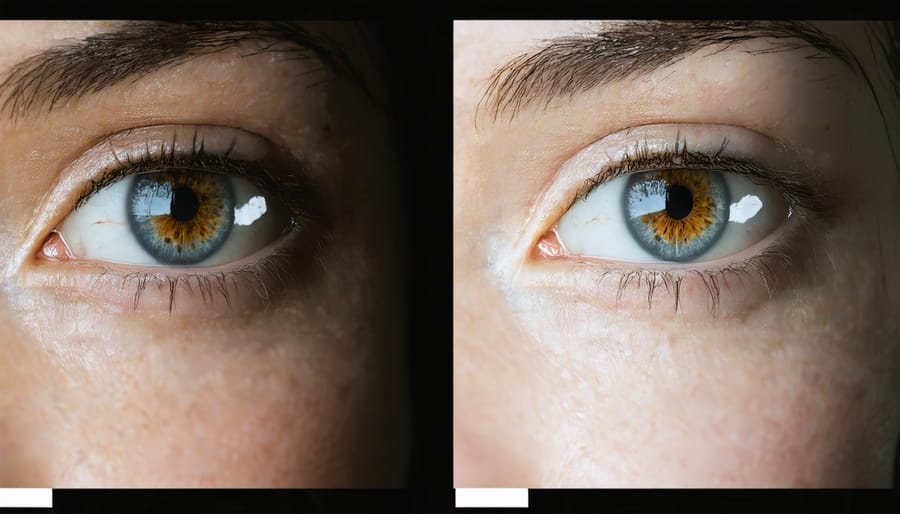
Essential Settings for Low Light Success
Auto ISO and Custom Settings
Auto ISO is a powerful feature on the Sony ZV-E10 that can significantly improve your low-light shooting experience. When enabled, it automatically adjusts your ISO sensitivity while maintaining your chosen shutter speed and aperture, making it particularly useful in challenging lighting conditions.
To set up Auto ISO effectively, start by accessing the camera menu and navigating to the ISO settings. Set your minimum ISO to 100 (the camera’s native ISO) and choose your maximum ISO based on your noise tolerance. While the ZV-E10 can reach ISO 51200, setting a limit between ISO 6400 and 12800 typically provides the best balance between light sensitivity and image quality.
The key to mastering Auto ISO lies in customizing the minimum shutter speed setting. For handheld shooting, follow the reciprocal rule: set your minimum shutter speed to at least 1/focal length of your lens. For example, with a 50mm lens, use 1/50 second or faster. The ZV-E10 also offers an automatic minimum shutter speed option that adjusts based on focal length, which can be set to be faster or slower depending on your shooting style and stabilization needs.
For vlogging and video work, consider setting your minimum shutter speed to 1/60 second (for 30fps) or 1/120 second (for 60fps) to maintain natural-looking motion blur. Remember that higher ISOs will introduce more noise, but the ZV-E10’s excellent noise handling means you can often push the ISO higher than you might expect while maintaining acceptable image quality.
Custom button assignment can streamline your workflow – consider mapping ISO settings to a custom button for quick adjustments when Auto ISO needs overriding in specific situations.
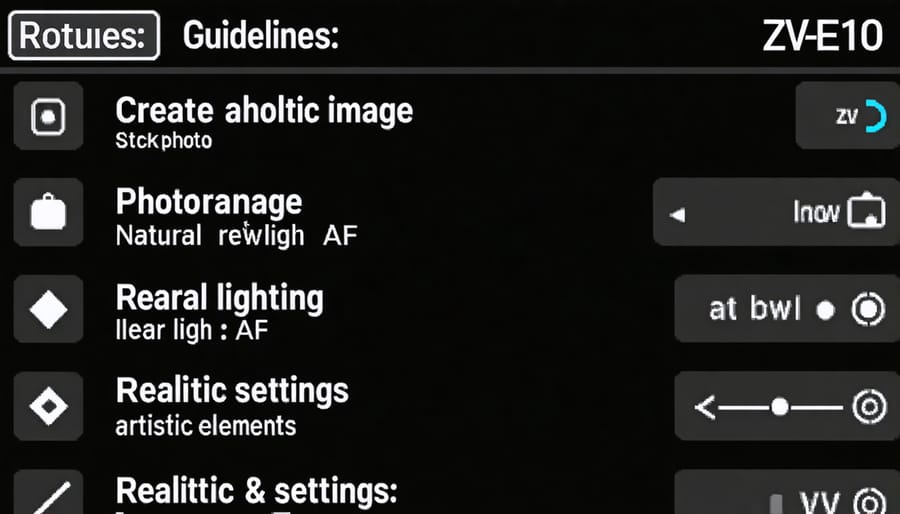
AF Settings for Dark Environments
Optimizing your ZV-E10’s autofocus settings can significantly improve its performance in dark environments. Start by setting the AF tracking sensitivity to “Responsive” to help the camera maintain focus on moving subjects even in challenging light. For static subjects, switch to Single-shot AF (AF-S) mode, which allows the camera to concentrate all its resources on achieving precise focus.
Enable the AF Illuminator function, which projects a red light to assist focusing in very dark conditions. However, be mindful that this might be distracting in certain situations, like events or wildlife photography. In such cases, you can disable it and rely on contrast detection.
The ZV-E10’s Face/Eye AF performs admirably in low light, but you’ll want to expand your AF point area to give the camera more data to work with. Set the Focus Area to “Wide” or “Zone” instead of using smaller focus points, as this helps the camera find contrast more effectively.
For particularly challenging scenes, consider using the Center AF point, which is typically the most sensitive. You can also employ the focus magnifier function to zoom in and confirm sharp focus manually when autofocus struggles.
Remember to adjust your minimum shutter speed settings when using AF-C (continuous autofocus) in low light. Setting it slightly slower than usual gives the camera more time to gather light and achieve focus, though you’ll need to balance this against motion blur.
If you’re recording video, switching to Pre-AF mode can help maintain consistent focus, as it continuously adjusts focus even before you press the shutter or record button.
Recommended Lenses and Accessories
Fast Prime Lenses
When shooting in low light with the ZV-E10, fast prime lenses are your best friends. These lenses feature wide maximum apertures, typically f/1.8 or wider, allowing more light to reach the sensor and enabling faster shutter speeds even in dim conditions.
The Sigma 16mm f/1.4 DC DN Contemporary is an excellent choice for vlogging and wide-angle shots, offering superb low-light performance while maintaining sharp image quality. For versatile everyday shooting, the Sony E 35mm f/1.8 OSS strikes an ideal balance between focal length and light-gathering capability, with the added benefit of optical stabilization.
Portrait photographers should consider the Sony E 50mm f/1.8, which combines excellent bokeh with strong low-light performance at an affordable price point. For those willing to invest more, the Sigma 56mm f/1.4 DC DN Contemporary offers even better light gathering and exceptional sharpness.
Remember that these fast primes not only help in low light but also create beautiful background blur, adding depth to your images. While they lack the versatility of zoom lenses, their superior light-gathering capabilities make them indispensable for low-light photography with the ZV-E10.
When choosing a prime lens, consider your typical shooting scenarios and preferred focal lengths, as each option offers distinct advantages for different photography styles.
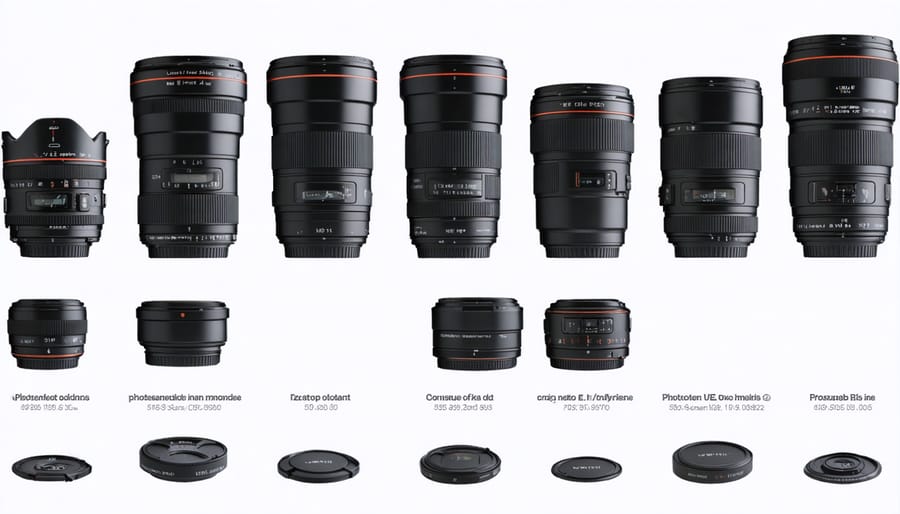
Stabilization Solutions
Even with the ZV-E10’s impressive low-light capabilities, stabilization becomes crucial when shooting in dim conditions. While the camera lacks in-body stabilization, several effective solutions can help you achieve steady shots. A quality tripod is your first line of defense, particularly for static shots or long exposures. Look for one with sturdy legs and a reliable ball head that can support your camera setup comfortably.
For more dynamic shooting situations, consider a monopod – it offers mobility while providing essential stability. Gimbal stabilizers have become increasingly popular among content creators, with options like the DJI RSC 2 or Zhiyun Weebill 2 being particularly well-suited for the ZV-E10’s form factor. When selecting stabilization gear, remember to factor in your existing lighting equipment basics and how they’ll integrate with your setup.
For handheld shooting, optical stabilized lenses can make a significant difference. Sony’s OSS (Optical SteadyShot) lenses work particularly well with the ZV-E10. Additionally, simple accessories like a camera cage or grip extension can improve handling and stability by providing better weight distribution and more points of contact. When budget is a concern, even a simple bean bag or makeshift support can help steady your shots in low-light situations.
Common Low Light Challenges and Solutions
When shooting with the ZV-E10 in low light, photographers often encounter several common challenges. Let’s explore these issues and their practical solutions to help you capture better images in challenging conditions.
One frequent challenge is noticeable image noise at higher ISO settings. While the ZV-E10 handles noise relatively well, you might notice graininess above ISO 6400. To combat this, try using the camera’s built-in noise reduction feature at a moderate setting. However, be cautious with aggressive noise reduction as it can soften important details. Consider using post-processing software like DxO PureRAW or Topaz DeNoise AI for more precise noise control.
Autofocus hunting is another common issue in dim environments. The ZV-E10’s AF system might struggle to lock onto subjects quickly. To improve focusing performance, switch to AF-S mode for still subjects and use the center focus point, which is more sensitive. Additionally, enabling the AF illuminator can help, though be mindful that it might be distracting in certain situations.
Motion blur often occurs when shooting handheld in low light. While the ZV-E10 lacks in-body image stabilization, you can still achieve sharp images by implementing proper natural light techniques. Use the reciprocal rule as a starting point: keep your shutter speed at least 1/focal length. For instance, with a 50mm lens, aim for 1/50s or faster.
Color accuracy can suffer in mixed lighting conditions. The ZV-E10’s auto white balance might struggle with artificial lighting. Consider using a custom white balance setting or shooting in RAW format for more flexibility in post-processing. Carrying a small white balance card can be invaluable for achieving accurate colors.
Battery drain increases significantly when shooting in low light, particularly with longer exposures and continuous AF. Keep at least one spare battery charged and consider reducing screen brightness to extend battery life. In extremely dark conditions, using the EVF instead of the LCD screen can also help conserve power.
Remember that every challenging situation is an opportunity to learn and improve. With practice and these solutions in mind, you’ll be better equipped to handle low light situations with your ZV-E10.
The Sony ZV-E10 proves itself to be a capable performer in low-light situations when properly configured and paired with suitable gear. By utilizing the camera’s impressive ISO range, fast prime lenses, and implementing the recommended settings we’ve discussed, you can capture stunning images even in challenging lighting conditions. Remember to start with the basics: keep your shutter speed appropriate for your subject, choose fast lenses when possible, and don’t be afraid to push the ISO up to 6400 when needed. The camera’s excellent noise handling, combined with thoughtful post-processing, can deliver professional-quality results that exceed expectations for its price point. Whether you’re shooting vlogs, street photography, or indoor events, the ZV-E10’s low-light capabilities make it a reliable tool for creators who often work in dimly lit environments.
